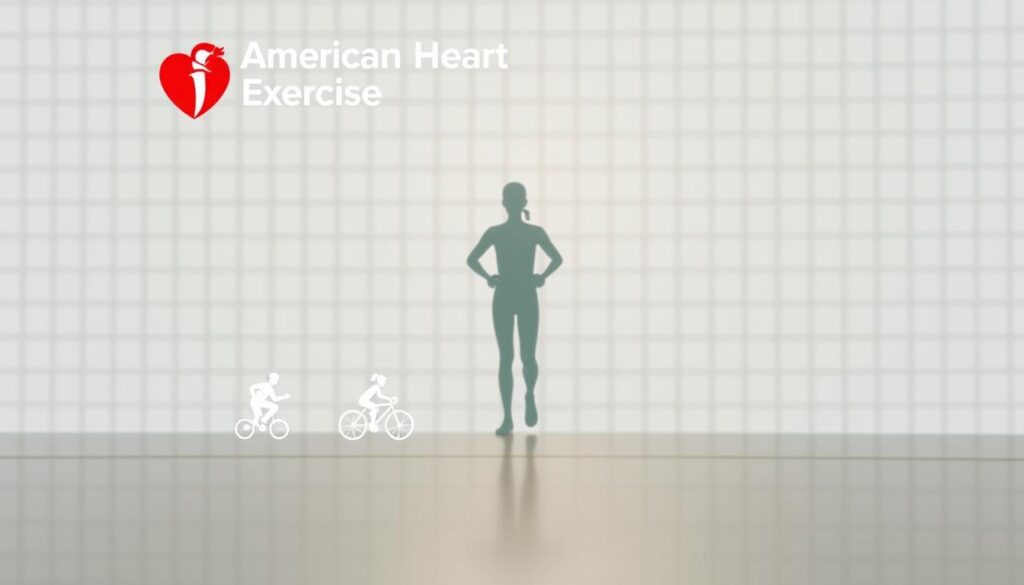How to Prevent Heart Disease: Why Exercise Matters Most
Table of Contents
Imagine standing at a crossroads where your daily choices could either protect or compromise your heart’s health. Every step you take, every movement you make can be a powerful weapon in your mission to prevent heart disease. The American Heart Association reveals a simple yet transformative truth: just 150 minutes of moderate-intensity exercise each week can dramatically reduce your cardiovascular risk.
Heart disease doesn’t happen overnight. It’s a gradual process influenced by your lifestyle choices. Your exercise routines are not just physical activities—they’re strategic interventions that can shield your heart from potential threats. Whether you’re walking, cycling, or engaging in strength training, each moment of movement counts towards building a resilient cardiovascular system.
Understanding the connection between exercise and heart health is crucial. Physical inactivity is a leading risk factor for heart disease, making your commitment to regular movement a critical defense mechanism. By embracing exercise as a fundamental part of your wellness strategy, you’re not just working out—you’re investing in a healthier, longer life.
Key Takeaways
- 150 minutes of moderate exercise weekly can significantly reduce heart disease risk
- Exercise is a powerful preventive strategy against cardiovascular problems
- Physical activity strengthens heart muscle and improves blood circulation
- Even short exercise sessions can provide meaningful health benefits
- Consistent movement is key to maintaining heart health
Understanding the Critical Link Between Exercise and Heart Health
Exercise is a powerful tool for keeping your heart healthy. Your heart gets stronger and works better with regular activity. Studies show that regular exercise greatly improves heart health and lowers disease risk.
The science behind exercise’s benefits for the heart is clear. Physical activity offers many advantages for your heart and blood system:
- Strengthens heart muscle function
- Improves blood circulation
- Supports healthy diet integration
- Enhances cholesterol management
- Supports blood pressure control
To get better results, you can benefit from the benefits of this nutritional supplement
Blood Circulation and Heart Function
Regular exercise helps create new blood vessels. This boosts oxygen delivery and improves circulation. It makes your heart pump better. People who are active moderately can lower their heart disease risk a lot.
Reducing Cardiovascular Risk Factors
Exercise is key in managing heart risk factors. A regular workout routine can:
- Lower LDL (bad) cholesterol levels
- Increase HDL (good) cholesterol
- Reduce systemic inflammation
- Improve insulin sensitivity
| Exercise Type | Heart Health Benefit | Recommended Frequency |
|---|---|---|
| Brisk Walking | Improves circulation | 30 minutes, 5 days/week |
| Cycling | Lowers blood pressure | 45 minutes, 3 days/week |
| Strength Training | Reduces inflammation | 2-3 days/week |
By understanding these connections, you can develop a strategic approach to heart health through targeted physical activity.
The American Heart Association’s Exercise Guidelines

Knowing the right exercises is key for heart health. The American Heart Association offers clear guidelines. These help protect your heart through physical activity.
The main advice is to create balanced exercise plans. These plans support preventive screenings and heart wellness. Key guidelines include:
- 150 minutes of moderate-intensity aerobic exercise per week
- 75 minutes of vigorous-intensity aerobic activity per week
- Muscle-strengthening activities at least two days weekly
Breaking down exercise into manageable sessions can make these goals more achievable. Try three 10-minute workouts instead of one long session. This way, you get the same health benefits.
| Exercise Type | Recommended Duration | Health Benefits |
|---|---|---|
| Moderate Aerobic Activity | 150 minutes/week | Improves cardiovascular fitness |
| Vigorous Aerobic Activity | 75 minutes/week | Enhances heart and lung function |
| Strength Training | 2 days/week | Builds muscle, supports metabolism |
People with health concerns should talk to doctors to make exercise plans. Your fitness journey should match your health and medical history.
Remember: Any increase in physical activity can contribute to better heart health!
How Regular Physical Activity Transforms Heart Health
Physical activity is a powerful tool for protecting your heart and improving overall cardiovascular health. Research shows that regular exercise can dramatically reduce your risk of heart disease and enhance your body’s critical health markers.
Your heart benefits a lot from consistent physical activity. Studies reveal that active adults can reduce their cardiovascular disease risk by up to 35%. This shows how important exercise is for heart health.
Improved Blood Pressure Control
Regular exercise plays a big role in blood pressure control. It helps strengthen your heart muscle, making it more efficient at pumping blood. The World Health Organization says that people who are active can lower their blood pressure levels a lot.
- Reduces systolic and diastolic blood pressure
- Improves blood vessel flexibility
- Decreases strain on cardiovascular system
Enhanced Cholesterol Management
Your cholesterol levels can improve a lot with regular exercise. A healthy diet and physical activity can raise HDL (good) cholesterol and lower LDL (bad) cholesterol. This creates a more balanced lipid profile.
Weight Management Strategy
Maintaining a healthy weight is key for heart health. Regular physical activity burns calories, builds muscle, and boosts metabolism. The World Health Organization suggests adults should aim for at least 150 minutes of moderate-intensity aerobic activity weekly. This supports weight management and cardiovascular health.
Physical inactivity is responsible for approximately 30% of ischemic heart disease cases.
Getting Started with Heart-Healthy Exercise Routines

Starting exercise to prevent heart disease is easy. You don’t need a fancy gym or hard workouts. Simple daily activities can boost your heart health. Movement is medicine for your heart.
Adults should do 150 minutes of moderate exercise each week. That’s about 30 minutes, five days a week. Start small and build up your fitness and heart strength.
- Take stairs instead of elevators
- Park farther from building entrances
- Walk during lunch breaks
- Garden or do household chores
Start with low-impact activities that fit your fitness level. Walking, swimming, and cycling are great for beginners. The most important thing is to keep going and get better slowly.
| Activity Type | Recommended Frequency | Benefits |
|---|---|---|
| Walking | 30 minutes, 5 days/week | Improves circulation, reduces heart disease risk |
| Swimming | 2-3 times/week | Low-impact, full-body cardiovascular workout |
| Cycling | 3-4 times/week | Strengthens heart muscles, enhances endurance |
Pay attention to your body during exercise. Look out for signs like chest pain, extreme tiredness, or hard breathing. Always talk to your doctor before starting a new exercise plan, especially if you have health issues.
Prevent Heart Disease Through Strategic Exercise Planning
Creating effective exercise routines is key to avoiding heart disease. Your physical activity should be both strategic and lasting, focusing on long-term heart health. A well-thought-out exercise plan can greatly lower your heart disease risk.

Creating Sustainable Exercise Habits
Building consistent exercise habits is vital for heart health. The American Heart Association suggests these guidelines:
- Aim for 2½ hours (150 minutes) of moderate-intensity aerobic activity weekly
- Alternatively, engage in 1¼ hours (75 minutes) of vigorous-intensity aerobic activity
- Include muscle-strengthening activities at least two days per week
Monitoring Exercise Intensity
Tracking your workout intensity is important. It ensures you’re working out right without pushing too hard. Use these methods to check your exercise intensity:
- Heart rate monitoring
- Perceived exertion scale
- Talk test during exercise
Building Progressive Exercise Programs
Your workouts should get harder as you get fitter. Start with easy activities and slowly add more challenge. This keeps your workouts interesting, prevents plateaus, and lowers injury risks.
Meeting aerobic exercise goals regularly can improve your heart health over time.
Combining Aerobic and Strength Training for Maximum Benefits
To prevent heart disease, mixing aerobic and strength training is key. Studies show this mix lowers heart risks and boosts health.
Your weekly workout should include both aerobic and strength exercises. The World Health Organization suggests:
- 150-300 minutes of moderate-intensity aerobic activity
- Muscle-strengthening activities involving major muscle groups
- At least two dedicated strength training sessions per week
This mix offers big benefits. A meta-analysis found that those doing both aerobic and strength exercises have a 40-46% lower risk of heart death compared to those who don’t exercise.
| Exercise Type | Recommended Duration | Key Benefits |
|---|---|---|
| Aerobic Exercise | 150-300 minutes/week | Improves cardiovascular endurance |
| Strength Training | 30-60 minutes/week | Enhances muscle mass and metabolism |
| Combined Approach | 180-360 minutes/week | Reduces ASCVD risk by up to 25% |
By mixing both, you can fight heart disease well. Begin with easy activities like brisk walking, cycling, and light weights. As you get fitter, up the intensity and time.
Exercise Benefits Across Different Age Groups
Your exercise plan should change as you get older. Knowing how exercise affects your health at different ages helps keep your heart healthy. Your genes and family history are key in figuring out your heart health risks. So, getting regular check-ups and choosing the right exercises is vital.
As you age, your body needs different kinds of exercise. Older adults need specific activities to stay healthy and independent:
- Aim for 150 minutes of moderate-intensity aerobic activity weekly
- Incorporate muscle-strengthening activities twice per week
- Focus on balance and flexibility exercises
Exercise Recommendations by Decade
Each age group needs its own exercise plan. In your 40s and 50s, it’s key to do resistance training. This helps keep your muscles strong and your metabolism healthy. Your family history can also guide what exercises are best for you.
Adapting Exercise as You Age
When you’re in your 60s and older, it’s important to make changes. Low-impact activities like swimming, walking, and gentle yoga can help prevent peripheral artery disease. Regular check-ups and the right exercise can greatly lower your heart disease risks.
Special Considerations for Seniors
Seniors really benefit from staying active. Regular exercise can:
- Reduce fall risks
- Improve cognitive function
- Manage chronic conditions
- Enhance emotional well-being
Always talk to your doctor before starting a new exercise plan. This is especially true if you have health issues or a family history of heart disease.
Lifestyle Modifications to Support Exercise Benefits
Your heart health journey goes beyond just exercise. It involves making lifestyle changes that boost your fitness. Eating right, managing stress, and quitting smoking are key to keeping your heart healthy and getting the most from your workouts.
Good nutrition is the base of a heart-healthy lifestyle. Eat lots of veggies, fruits, and whole grains. Studies show that controlling cholesterol and blood pressure starts with your diet. The American Heart Association suggests eating less sugar and following a 2,000-calorie diet for heart health.
Managing stress is also vital for heart health. Too much stress can raise blood pressure and heart disease risk. Try meditation, deep breathing, and better time management to reduce stress. Getting seven to nine hours of sleep a night also helps manage stress and supports heart recovery.
Quitting smoking is another big step for heart health. It offers immediate and long-term benefits for your heart. By exercising regularly, eating well, managing stress, and quitting smoking, you build a strong defense against heart disease. Remember, making small, consistent changes can greatly improve your heart health over time.
FAQ
How much exercise do I need to prevent heart disease?
The American Heart Association suggests at least 150 minutes of moderate exercise weekly. This can be brisk walking, cycling, or swimming. Even 10-minute sessions can help your heart.
Can I prevent heart disease if I have a family history of cardiovascular problems?
Family history is a risk factor, but you can lower your risk. Regular exercise, a healthy diet, stress management, and screenings are key. Exercise improves your heart fitness and reduces risk factors.
Is it ever too late to start exercising for heart health?
It’s never too late to start exercising. Even those starting later in life can see heart health improvements. Start slowly, get your doctor’s okay, and gradually increase your activity.
What types of exercise are best for heart disease prevention?
Combining aerobic and strength training is best. Aerobic activities like walking improve your heart. Strength training helps manage weight and supports heart health.
How does exercise impact cholesterol levels?
Exercise can raise good cholesterol and lower bad cholesterol. It improves cholesterol metabolism, reducing artery plaque and heart disease risk.
Can exercise help control blood pressure?
Yes, regular exercise can manage blood pressure. It strengthens your heart and improves blood vessel flexibility. This can lower blood pressure and reduce heart strain.
What if I can’t do intense workouts?
No worries! Moderate activities like brisk walking or gardening are beneficial. The key is to move more and sit less. Start with low-impact exercises and increase as you get fitter.
How does stress relate to heart disease prevention?
Chronic stress can harm heart health by raising blood pressure and inflammation. Exercise is a great way to reduce stress. It releases endorphins, improves mood, and manages stress-related heart disease risks.
Are there special exercise considerations for seniors?
Seniors should do a mix of cardio, strength training, and balance exercises. Low-impact activities like swimming or walking are good. Always consult a doctor and start with exercises that fit your fitness level.
How important is diet in conjunction with exercise for heart health?
Diet and exercise are both crucial for heart health. A healthy diet with regular exercise helps manage weight, control cholesterol, and reduce inflammation. It fuels your heart for optimal performance.







